Although enthusiasm for atomic energy has waxed and waned over the decades, Bárbara Pinho finds the question of waste has yet to be solved
On a sunny October day in 1956 on the coast of Cumbria, UK, Queen Elizabeth II opened the first nuclear power station in Great Britain: Calder Hall. The station was operational for 47 years and was one of the first to produce electricity for domestic use. But the technological revolution that started on a sunny day by the sea has made a long-lived legacy of nuclear waste in the UK. And over 60 years on, the challenge of what to do with it remains.
After the first kilowatt of nuclear power, the world was ready for a change. Scientists, policymakers and the general public were confident that the technology could power the world with unprecedented efficiency while making very little waste. Countries around the world began constructing more nuclear sites.
In the 30 years between 1956 and 1986, the world built dozens of nuclear units. The real boom happened in the 1970s, when, on average, construction started on 25 to 30 new sites each year. But in 1986, the Chernobyl accident made things pause. Some countries, like Italy, completely shut down their remaining nuclear power plants and, to this day, keep everything shut. Others kept commissioning these sites, particularly in Eastern Europe and Asia, where dozens of plants started construction. However, throughout the years, some of these projects were abruptly cancelled.
2011 was also a dark year for the technology. After a massive earthquake and tsunami caused a serious accident in Fukushima’s Daiichi plant in northern Japan, nuclear energy production trends slowed globally. Japan decommissioned most of its reactors amid a flurry of controversy. Nuclear power once accounted for 31% of the country’s electricity, but by 2015, that number was zero. In the wake of the accident, Germany reacted strongly too, shutting down more than half of its sites between 2011 and 2017. The country aimed to close all locations by 2022, but Chancellor Olaf Scholz decided to extend the lifetime of three power plants amid the energy constraints caused by the sanctions posed to Russia. The country nevertheless plans to decommission all nuclear power production in 2023.
A green tool
But not everyone gave up on nuclear power. Despite Chernobyl and Fukushima, many countries, including the US, France and Sweden, held investments in the technology that’s far cleaner on carbon emissions than other forms of energy production. That explains why, up until today and on a global scale, nuclear power generation has kept increasing, year after year. By 2021, nuclear power accounted for 70% of electricity in France, 40% in Sweden and 15% in the UK. With concerns over climate change only increasing, another U-turn may lie ahead, and this time, nuclear might become popular again.
We will have nuclear waste with a life of 10,000 to 100,000 years
The EU recently classified nuclear power as a sustainable form of energy, paving the way for further investments. The UK’s Energy Security Strategy, published in 2022, highlights re-investments in nuclear, with plans to build up to eight new reactors on UK soil by the end of the decade. And even countries like Japan are rethinking their anti-nuclear strategies and will restart nuclear sites while considering constructing new next-generation reactors.
But if the goal is to become carbon-neutral by 2050, can new nuclear help? To Friederike Friess, a researcher at The University of Natural Resources and Life Sciences in Vienna, Austria, the time has passed. ‘Leaving aside the risk of nuclear power and the economics of nuclear power, it’s too late.’ She adds that building new plants isn’t feasible to achieve net zero emissions by the middle of the century because of the time it takes to build a reactor and the lack of capacity to simultaneously build the many reactors needed.
Others, however, see nuclear as a part of a wider strategy to lower carbon emissions. ‘I feel that to fight against climate change, nuclear energy is probably one option,’ says Jean-Christophe Gariel, deputy director of the Institute of Radioprotection and Nuclear Safety in France. But he brings up the issue of nuclear waste: ‘We will have nuclear waste with a life of 10,000 to 100,000 years. I think it can be safely stored for one or two generations, but what will happen in 100 years? 1000 years? Nobody knows. This is a big question.’
Whether nuclear power will play a crucial role in the fight against climate change is uncertain. What is certain, however, is that the millions of cubic metres of nuclear waste produced since the 1950s need handling. Because of the risk nuclear waste poses to ecosystems, industries need to manage and deposit it all safely. And although nuclear power has been around for decades, deposits to permanently store waste have not.
What is (and isn’t) nuclear waste
When nuclear waste comes to mind, you might think of steel containers with a glowing liquid leaking from the lid – but we have Homer Simpson to blame for such depictions. Nuclear waste is far less fluorescent and far more complicated.
Most of the waste produced in the nuclear industry is low-level and easier to handle
Nuclear waste is broadly defined as waste that is contaminated with radioactivity or is radioactive itself. Countries have slightly different approaches to categorising their nuclear waste but, as a rule of thumb, one way to distinguish each type is by radioactivity and how long it will remain unsafe. Low-level waste materials are only slightly contaminated, like tools and clothes used by workers in nuclear power plants. Most of the waste produced in the nuclear industry is low-level and easier to handle.
Nuclear sites also produce high-level waste, albeit in much smaller quantities. In France, for example, out of the 2kg of radioactive waste produced per inhabitant in a year, only 10% of that is highly radioactive and considered high-level waste. Most of the radionuclides (the unstable elements that release radiation) in high-level waste will decay away during the first 1000 years, while some will persist for tens of thousands to over one million years. But what does high-level waste look like? It’s mostly the used rods of nuclear fuel and parts of nuclear power plants when they are decommissioned. Highly radioactive waste is currently stored in hundreds of sites around the world. This isn’t a definite solution, but rather a way of managing waste while we wait for one.
‘In the UK, like in France, we vitrify our high-level waste […] and basically store it in casks of glass. And all those casks are in a storage facility at Sellafield, and that’s almost full,’ says Karl Travis, reader in nuclear waste disposal at the University of Sheffield, UK.
Besides low-level and high-level waste, there’s also intermediate waste, which further needs to be properly disposed of while it remains toxic. Sellafield, one of the most hazardous sites in Western Europe, currently stores high-level and intermediate-level waste in vast amounts: enough to fill 27 Olympic-sized swimming pools.
Much long-lived nuclear ‘waste’ is spent fuel, which can be reprocessed and used again, but not all countries do this. The US, for example, doesn’t reprocess any and instead stores the tonnes of spent fuel in 75 sites across the country. France and the UK, on the other hand, reprocess most of their spent fuel. Why the US doesn’t reprocess their spent fuel is a political question. Still, the fact remains that spent fuel is technically not nuclear waste, yet some countries handle it as such.
Because there are different forms of waste, the nuclear industry has devised various strategies to manage and dispose of each.
Managing the less toxic
Picture a valley filled with green grass and the coastline of Normandy behind. This is a landfill, but not the usual kind. Under the ground lies half a million cubic metres of low- and intermediate-level waste containing short-lived radionuclides.
From 1969 until its closure in 1994, France deposited waste at the Manche Disposal Facility. In the almost 30 years since, authorities have been monitoring its surroundings attentively to assess whether or not there has been any contamination. Gariel explains that this work is crucial to ensure the public is safe but also for the sake of transparency. ‘As soon as you talk about nuclear energy or nuclear in general, there is a large sensitivity from the public. And that’s why it is very important to perform these measurements and to make them accessible to the public,’ he adds, referring to WEBTELERAY, a free app that lets people know radiation levels in French territory at all times.
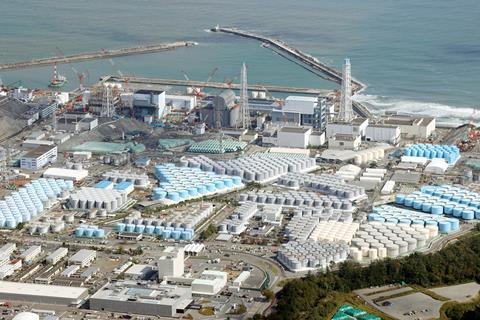
Though the waste is under a cap of earth and grass, this is considered surface depositing and should last for about 300 years – the time it takes for the waste to stop being dangerous. Another surface site is in the works and will safeguard the same type of waste. These are some plans to get rid of low-level radioactive waste. Yet, contrasting with the quiet meadow of Normandy is a more controversial plan happening thousands of kilometres to the east.
In Japan, authorities recently authorised the discharge of treated wastewater from Fukushima’s nuclear plant into the sea, causing outrage among locals, scientists and environmental agencies. In 2011, following the accident, workers had to use water to cool down the reactors and prevent further damage. At the site, they kept collecting and storing wastewater in hundreds of tanks, and now that water needs to go somewhere.
Gariel explains that the discharge isn’t as dangerous as some would think. ‘The level of activity of what will be released will be of the same order of magnitude that what was done previously, before the accident.’ He’s talking about the radionuclides emitted regularly by nuclear power sites’ standard operation. ‘There will be some dilution of what is in the tank, and when it will arrive in the sea, it will be at a very low level of activity […] quite comparable to what was done 15 years ago,’ he adds.
He understands the fears of locals, however, particularly those who worked in the fishing industry. Because these people had to stop working years ago – authorities stopped fishing activities after the accident – they are now concerned that markets and customers will see Fukushima’s local fish and food as toxic. ‘I would say this is more of a societal issue rather than a scientific issue. And I can understand very easily the position of the local community. An accident happened. Trust was lost. So now, this is a societal question,’ he concludes.
Getting rid of the most toxic
‘Various things have been considered before we got here: blasting waste into space, putting it in [tectonic] subduction zones […] all those have been rejected internationally for various reasons,’ says Travis. ‘And so we’ve pretty much converged on geological disposal.’
A geological deposit (also known as GDF) is an underground site where high-level waste can be deposited for hundreds to thousands of years. A site needs to safely reserve waste while it’s highly hazardous. It’s several hundred metres deep (up to 1km at cases) and is layered by multiple materials to prevent leaking into the underground ecosystems.
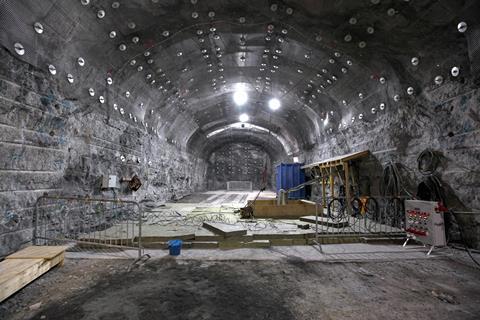
‘A GDF is into circulating groundwater. So, all the tremendous research effort that’s been going on for decades now is to try and build multiple engineered barriers that can withstand or cope with circulating groundwater without anything entering the biosphere,’ Travis explains.
Katherine Morris, director of the Nuclear Waste Services Research Support Office and professor at the University of Manchester, works on understanding how radioactive elements behave in environments like a geological repository. She explained that her work has shown that in engineered unnatural environments, like a GDF, the radionuclide mobility is often very low, meaning the risk of radionuclide transport also seems low.
While it may sound quite straightforward, making what looks like a massive hole in the ground to store nuclear waste takes an enormous amount of money, time and political work. These three factors explain why out of the 30-odd countries operating nuclear reactors today, only one is close to finishing a deposit for high-level waste: Finland.
The Finnish site is enormous. Throughout its years of operations, it will total around 100 tunnels, making up a length of 35 km. The facility looks like a massive web of underground steel and concrete with deposition tunnels spread across a vast underground terrain. Each tunnel will hold about 30 canisters of waste, and Posiva, the local company working on the site, plans on depositing highly radioactive waste and spent fuel by 2025.
‘They’ve taken 40 years to get to where they are now. So, it’s been a very slow process,’ says Penelope Harvey, social scientist at the University of Manchester who also sits on the government’s Radioactive Waste Management Committee. ‘They invested a lot of resources in letting communities do their own science and letting communities rule themselves out.’
Communities play a crucial role in massive engineering projects because, at the end of the day, a site needs a location and those tend to be close to where people live. And new infrastructure like bridges and railways pose their own difficulties, but projects with the nuclear label face an entirely different challenge: fear.
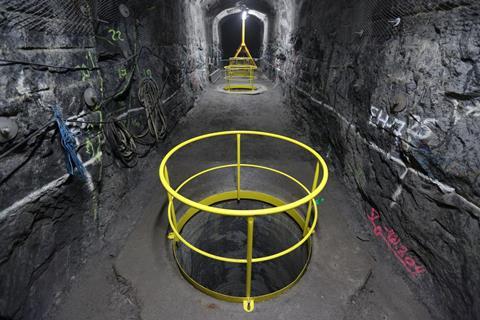
‘The imagery around nuclear is so apocalyptic. The films, the war scenarios; its connection to the military and its connection to state power,’ Harvey explains. History and Hollywood have put a stamp on humanity’s perception of ‘nuclear’. This could explain the diverse opinions Harvey has found when talking to communities about this subject.
‘Some people would rather keep the waste where they can see it because they’re anxious about what they [authorities] are going to do,’ she explains. Harvey adds that another set of opinions focuses on putting waste in geological disposals but making it retrievable. All scenarios bring up concerns.
Nikolaus Müllner, director of the Institute for Safety and Risk Sciences at The University of Natural Resources and Life Sciences, understands the fears. ‘This is justified, especially for the high-level waste. But it’s not that easy [to retrieve waste from a deposit].’
Community concerns
Because the subject is so complicated, rich, technologically advanced nations struggle a lot with deciding what to do in their backyards. The UK started to recognise the issue of nuclear waste 50 years ago but, until now, has failed to deliver a final facility. The US is struggling too. They started the Yucca Mountain project in the late 1980s, an initiative to solve the mounting pile of nuclear waste in the country. However, due to public outcry, all that is left of the project is controversy (and a $13 billion [£11bn] hole in the ground). What both countries and several other nations seem to lack is a way to address communities without triggering local outrage.
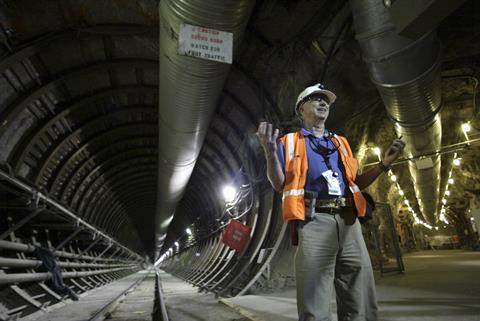
‘It wasn’t really until around 2008 that [the UK government] actually began searching for a community that might be willing [to host a GDF], a volunteer community. So until then, there’s been various attempts, but the government would decide: I will put it there. And then there were massive protests,’ Harvey adds.
So now, the strategy is different. By working with social scientists, UK authorities create spaces for conversations about nuclear waste and the fears and thoughts that come with the topic. To Harvey, these conversations are necessary because ‘the mistrust is absolutely unavoidable, it’s very strong, and it’s already there’.
So far, works developing in four UK communities look promising, but a final geological disposal facility is still far away. ‘I think we just need to keep momentum, mindful of the fact that geological disposal of higher activity radioactive waste is both a technological and a societal issue […] Around mid-century is a good target to have,’ adds Morris.
Information from the Nuclear Decommissioning Authority in the UK agrees that a GDF would be ready by 2040 for intermediate waste. However, a site to deposit all of the UK’s high-level waste should take longer. Dates point to 2075 with expected delays – almost 50 years from now. With nuclear sites full to the brim with waste, some academics are working on faster strategies, like deep boreholes.
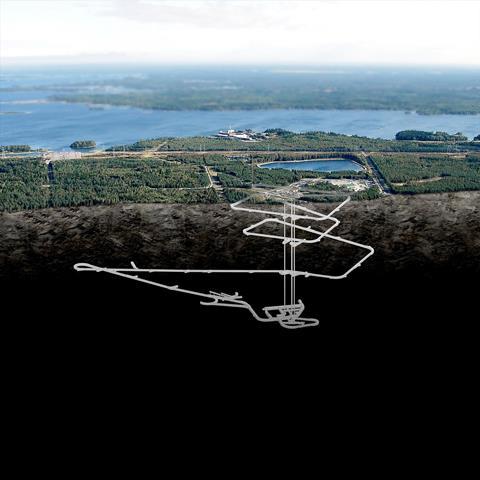
Deep boreholes follow the same logic of a multi-layered deposit for highly radioactive waste underground. However, two crucial aspects change: the footprint and depth. While GDFs take a massive footprint underground, a deep borehole isn’t as wide. According to Travis, if we consider all of the vitrified, high-level waste in the UK, estimates are that the footprint will be less than three football pitches – a smaller burden when compared to the 35km long Finnish repository. Depth-wise, while GDFs are planned to go 400–1000m underground, deep boreholes are designed to be up to 4km deep. These two differences make building a deep borehole faster.
‘If a borehole were to be pursued in the UK, we could bring forward the disposal of high-level waste by at least 35 years,’ Travis adds. However, boreholes wouldn’t be enough to deposit all of the UK’s waste. ‘We’ll still need a GDF in this country, regardless of boreholes or not, because we’ve got so much intermediate-level waste, and that’s just not suitable,’ he concludes.
To manage high-level nuclear waste, there’s no perfect solution, no silver bullet. Each strategy has a set of caveats, and those keep piling up. And perhaps the reason why the scientific community so solidly agrees on depositing nuclear waste is because there’s really no other quick fix – at least for now.
Modern alchemy
Transmutation – changing radioactive waste, namely the small and highly toxic components, into something more innocuous – is an old dream. The goal is to turn long-lived radioactive nuclei into more stable ones, reducing the risk of contamination. Several countries have tried but to no avail.
According to an expert report commissioned by the Federal Office for the Safety of Nuclear Waste Management in Germany, the dream remains theoretical. According to Friess, who co-authored the report, several challenges lie ahead. For starters, researchers need new reactors and reprocessing plants to successfully convert long-lived atom nuclei into short-lived ones. Then, there’s the issue of physics and chemistry. ‘If you want to separate the minor actinides, they have very similar characteristics. For example, they are in different oxidation stages. But your processes don’t work on all of them.’ These questions need to be addressed in practical experiments.
We stored it for 60 years, can’t we carry on storing it?
Currently, there is one research facility in Belgium called MYRRHA in the first test phase. Müllner said the MYRRHA multipurpose reactor will let scientists conduct experiments on transmutation, and the resulting data will be crucial to move forward. The reactor will take a while to be ready, however, with estimates pointing to 2036. ‘Then we can do the tests, and we have to evaluate the results. It’s not something which is going to happen tomorrow,’ Müllner concludes.
Thus, while transmutation is still a long way in the future, experts agree that depositing nuclear waste is the way to go. And almost seven decades after that warm October day on the coast of Cumbria, it’s time to bite the bullet.
‘People say “Oh well, we stored it for 60 years, can’t we carry on storing it?”’ Morris says. Her answer is no, not really. She believes we should have a disposal pathway for nuclear waste so that we don’t burden future generations with the materials we have created. ‘We recognise that, in the UK, we are at a point when momentum is building, and we have a great opportunity for handling the development of the GDF correctly with volunteer communities and moving towards a facility with local acceptance. This will enable management of these legacy wastes.’
Bárbara Pinho is a science writer based in Porto, Portugal
Updated 14 March 2023 to correct the surname of Jean-Christophe Gariel throughout the article.

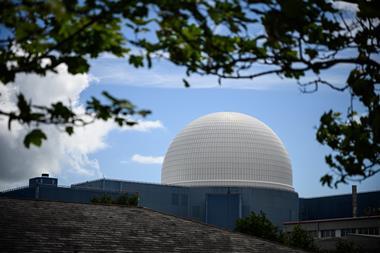
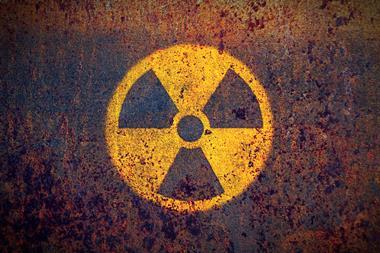
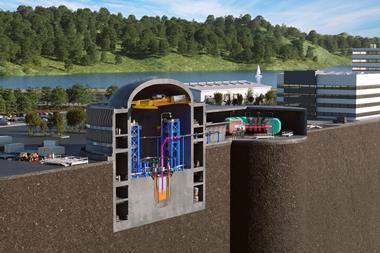
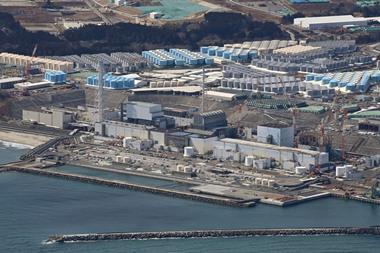
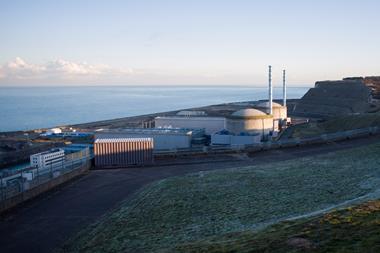
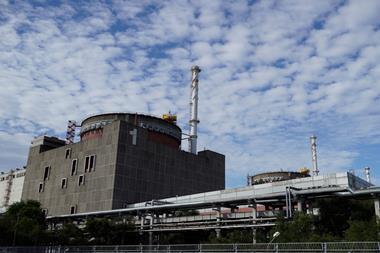






No comments yet